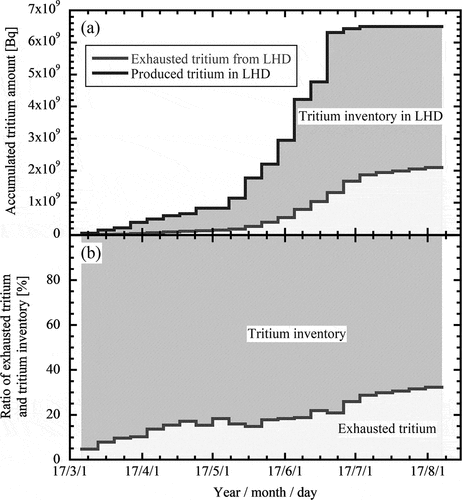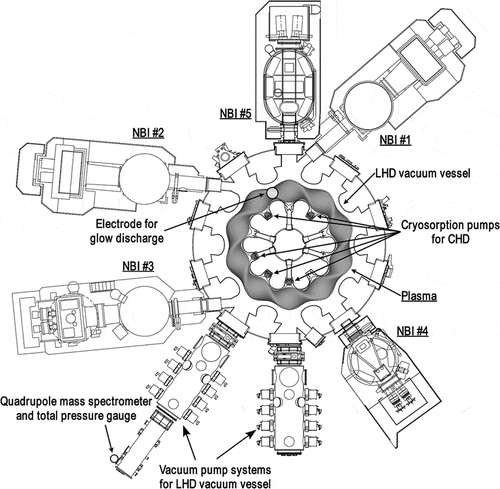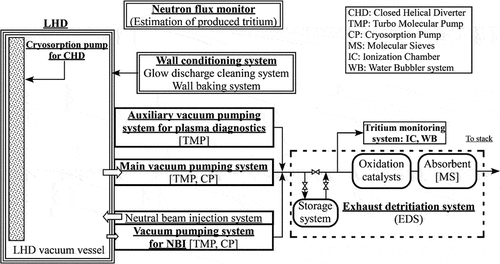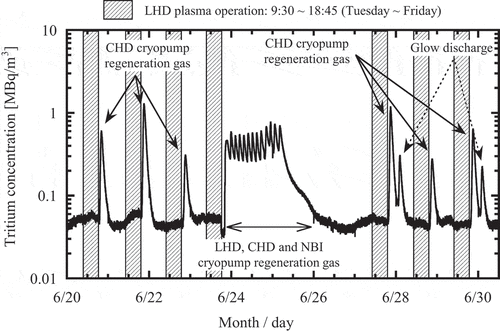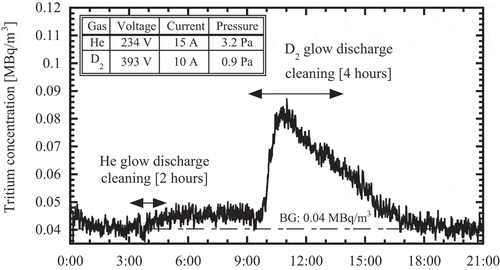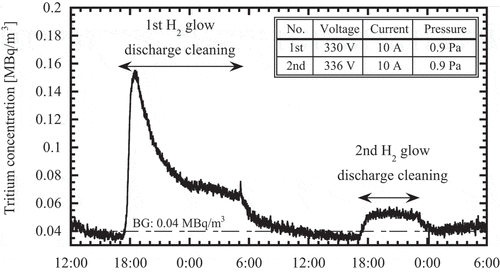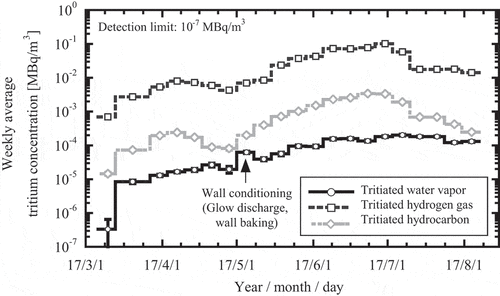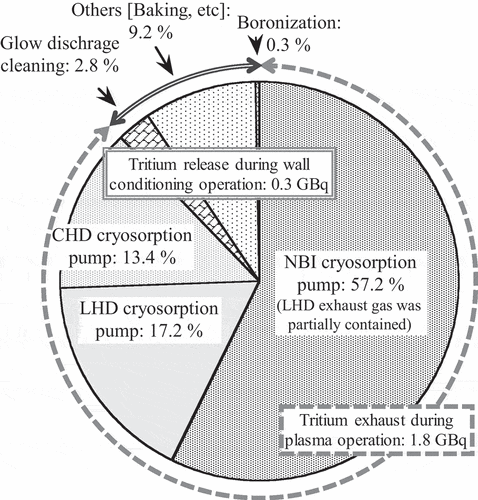Figures & data
Table 1. Operating conditions for glow discharge, Boronization, and baking
Table 2. Comparison of tritium exhaust rate in the initial deuterium plasma phase among the large fusion test devices
Figure 3. Variation of tritium concentration measured by an ionization chamber in the exhaust gas during the plasma experiments
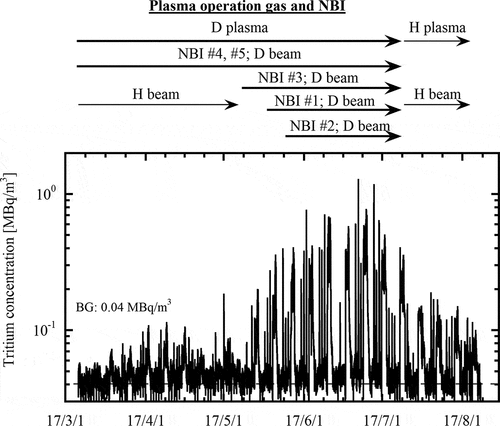
Figure 7. The hydrogen isotopes release behavior on the wall baking operation at 368 K: (a) the operating temperature of LHD vacuum vessel and tritium concentration at the inlet of EDS, (b) the gas species measured by a mass spectroscopy and the total pressure in the mass spectrometer (Q-mass) chamber
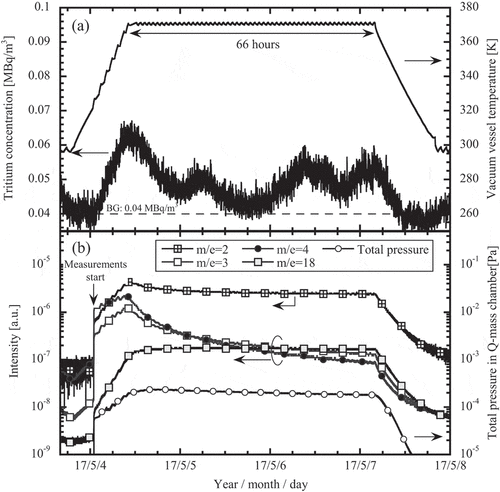
Figure 9. The relationships between tritiated hydrogen gas and tritiated hydrocarbons, water vapor in the exhaust gas
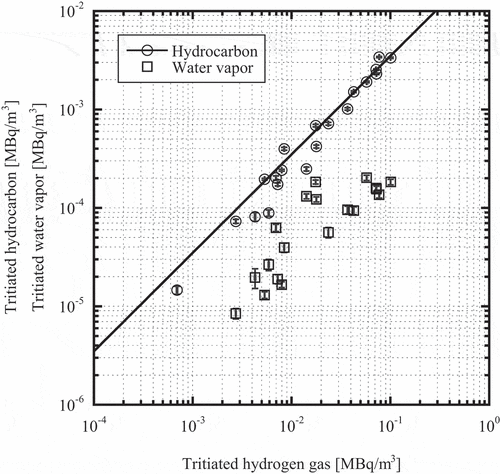
Figure 10. Accumulated tritium amount and the ratio of exhaust and inventory of tritium during the first deuterium plasma experiment
